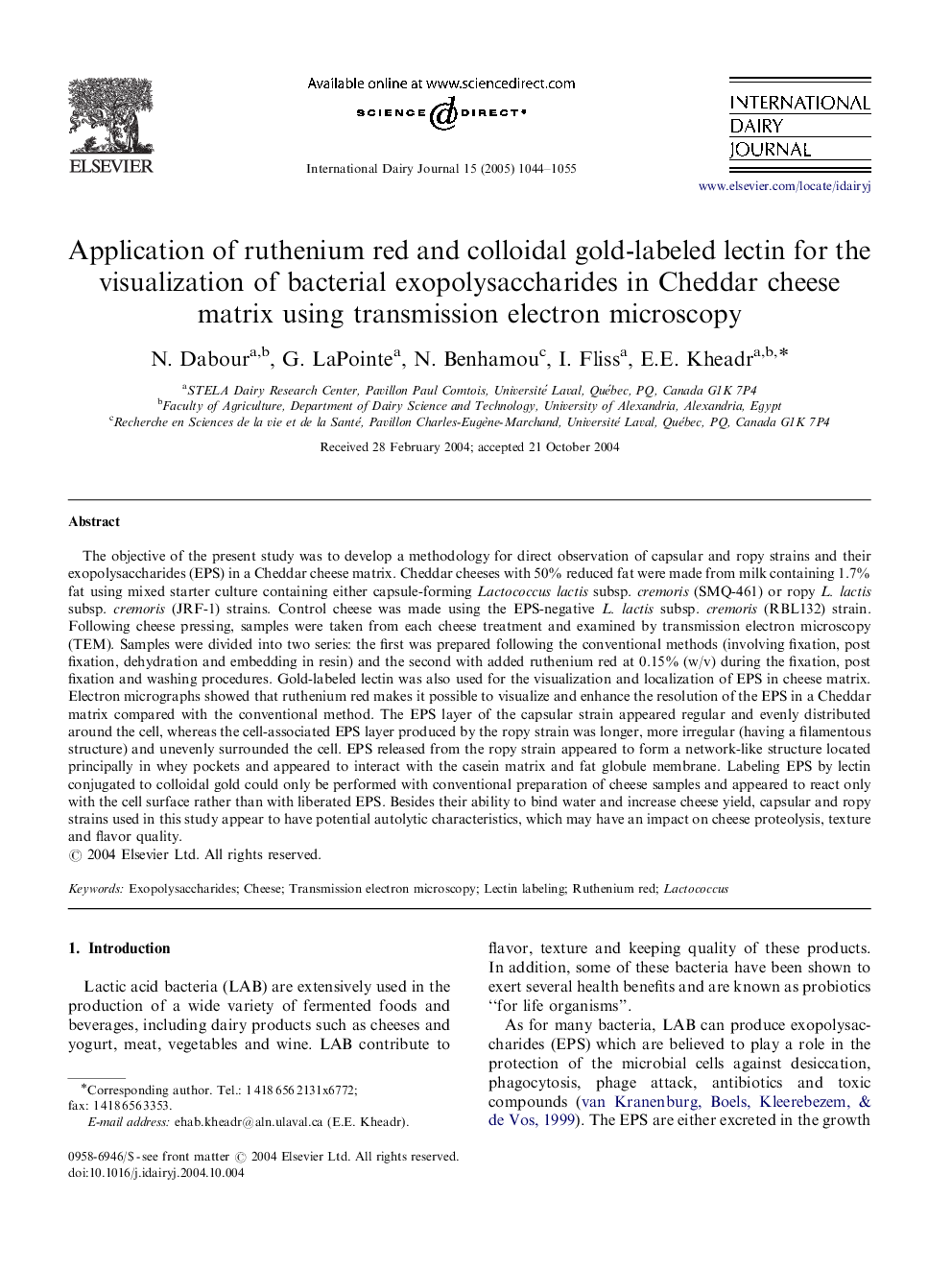| Article ID | Journal | Published Year | Pages | File Type |
|---|---|---|---|---|
| 8979225 | International Dairy Journal | 2005 | 12 Pages |
Abstract
The objective of the present study was to develop a methodology for direct observation of capsular and ropy strains and their exopolysaccharides (EPS) in a Cheddar cheese matrix. Cheddar cheeses with 50% reduced fat were made from milk containing 1.7% fat using mixed starter culture containing either capsule-forming Lactococcus lactis subsp. cremoris (SMQ-461) or ropy L. lactis subsp. cremoris (JRF-1) strains. Control cheese was made using the EPS-negative L. lactis subsp. cremoris (RBL132) strain. Following cheese pressing, samples were taken from each cheese treatment and examined by transmission electron microscopy (TEM). Samples were divided into two series: the first was prepared following the conventional methods (involving fixation, post fixation, dehydration and embedding in resin) and the second with added ruthenium red at 0.15% (w/v) during the fixation, post fixation and washing procedures. Gold-labeled lectin was also used for the visualization and localization of EPS in cheese matrix. Electron micrographs showed that ruthenium red makes it possible to visualize and enhance the resolution of the EPS in a Cheddar matrix compared with the conventional method. The EPS layer of the capsular strain appeared regular and evenly distributed around the cell, whereas the cell-associated EPS layer produced by the ropy strain was longer, more irregular (having a filamentous structure) and unevenly surrounded the cell. EPS released from the ropy strain appeared to form a network-like structure located principally in whey pockets and appeared to interact with the casein matrix and fat globule membrane. Labeling EPS by lectin conjugated to colloidal gold could only be performed with conventional preparation of cheese samples and appeared to react only with the cell surface rather than with liberated EPS. Besides their ability to bind water and increase cheese yield, capsular and ropy strains used in this study appear to have potential autolytic characteristics, which may have an impact on cheese proteolysis, texture and flavor quality.
Related Topics
Life Sciences
Agricultural and Biological Sciences
Food Science
Authors
N. Dabour, G. LaPointe, N. Benhamou, I. Fliss, E.E. Kheadr,
